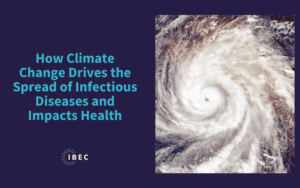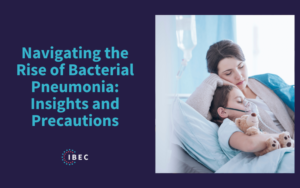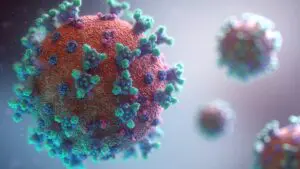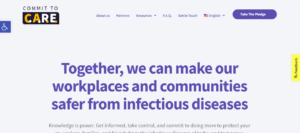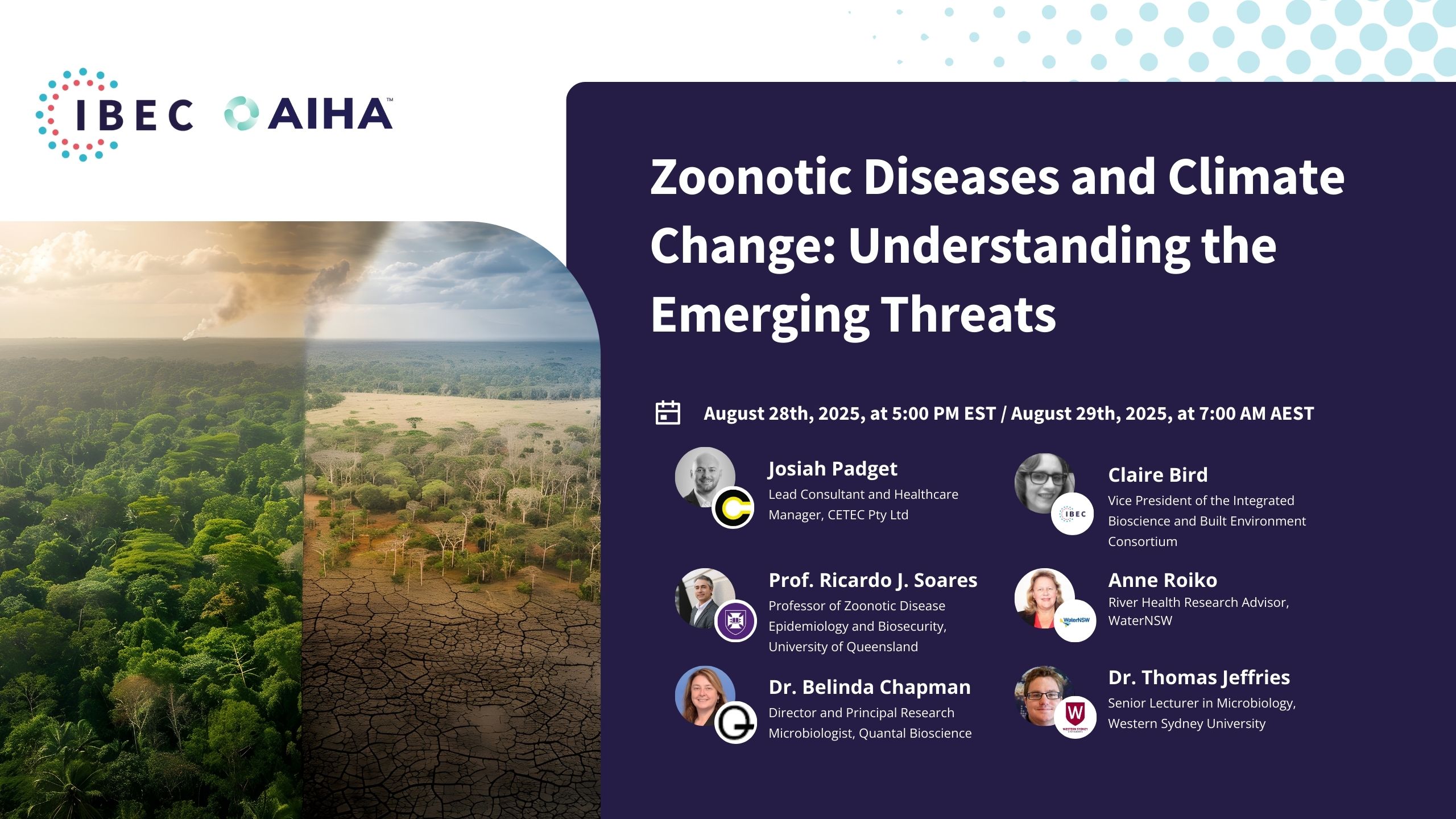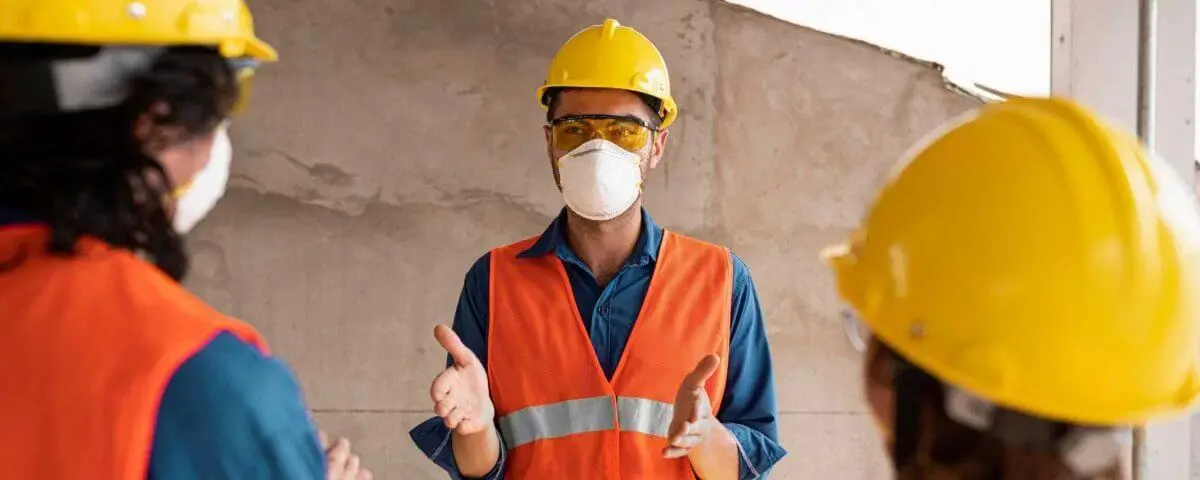
Since COVID-19 started, we have been looking for the right resources and standards to navigate our experience in the world safely. All over the world, people are looking to crucial stakeholders to regulate and guide the process through this pandemic.
The rulemaking process in the U.S. is one of the most crucial processes to ensure workplace safety. One of the leading agencies in this rulemaking has been The Occupational Safety and Health Administration (OSHA).
Thanks to the collaboration between The American Industrial Hygiene Association (AIHA) and with funding from the Centers for Disease Control and Prevention (CDC), The Integrated Bioscience and Built Environment Consortium (IBEC) hosted a virtual summit called “Protecting Our Most Vulnerable Workers: Challenges, Solutions & Invisible Barriers.”
James Frederick – Deputy Assistant Secretary of Labor for Occupational Safety and Health Administration (O.S.H.A.), was the summit’s keynote speaker, shedding light on the process of rulemaking, general risk mitigation practices, and educational resources.
Keep scrolling to read the interview with James Frederick; you’ll be able to learn about:
- About James Frederick.
- What OSHA has been doing in terms of COVID-19.
- Safety precautions OSHA recommends.
- How OSHA tackles worker disparities.
- The importance of safety management systems.
- The role of industrial hygienists.
- How OSHA copes with rapid changes.
Question: Can you tell us a bit about your background?
I’ve been involved with workplace safety and health for more than 30 years. Most of that time was with the United Steelworkers Union, where I engaged with OSHA as an external stakeholder in much the same way as you do by providing input on the agency’s regulatory activities, participating on advisory committees, and collaborating on health and safety initiatives.
I always looked for ways to engage with OSHA to improve working conditions for the workers I represented. I wanted to know that the agency was hearing me receptive and responsive. I also spent far too much time investigating severe injuries and fatalities. This was an intricate part of my work. But I did learn a great deal about workplace health and safety through those investigations.
I saw the importance of engaging with workers to understand concerns and address the hazards they identify through all of my work. I also saw significant improvements that can be made in safety and operations when workers are engaged and encouraged to have meaningful participation in the improvement of safety and health.
Since joining OSHA just over a year ago, I’ve gained an even greater appreciation for the agency’s impact and the great work and dedication of the OSHA career staff in all of the activities that OSHA is involved with.
Question: What has OSHA been doing in terms of COVID-19?
The COVID 19 pandemic has proved our mission at the agency is as important now as any time in the agency’s 50-year history. Since the beginning of the pandemic, OSHA has worked expeditiously to help protect workers from exposure to the Coronavirus and to combat the pandemic.
Over the past year, we’ve issued two emergency standards to protect workers in healthcare settings and another covering employers with 100 or more employees to require their workers to be fully vaccinated or undergo weekly testing.
We also launched a national Emphasis Program and focused OSHA’s enforcement efforts on workers at the most risk of contracting the Coronavirus and employers that retaliate against workers for exercising their right to report unhealthy or unsafe work conditions.
We’ve recently had to make some difficult decisions about the temporary emergency standards we’ve issued. First, on November 27, we announced our intent to withdraw the non-record-keeping portions of the health care emergency temporary standard.
We’ve announced that after evaluating the Supreme Court’s January 13 decision, OSHA is withdrawing the vaccination and testing temporary emergency standards. Although we are withdrawing the vaccination and testing ETS as an enforceable emergency temporary standard, we are not withdrawing this ETS as a proposed rule. Also, we will prioritize the agency’s resources to focus on finalizing a permanent health care standard.
Question: What can OSHA recommend to keep safe from COVID-19?
OSHA continues to strongly encourage the vaccination of workers against continuing dangers posed by COVID 19 in the workplace. We also highlight that the controls that are listed in the ETS remain vital for protecting workers.
These controls are also found in our guidance on mitigating and preventing the spread of COVID 19 in the workplace, are guidance emphasizes the importance of a multi-layered approach to controls, including vaccination testing, distancing, face coverings, and proper ventilation in indoor settings.
Question: How is OSHA tackling worker disparities?
At the core of our rulemaking efforts and all of the work that we do is getting robust input from our stakeholders to ensure that our efforts reflect the need of every worker. The COVID 19 pandemic has shone a bright light on Workplace Health and Safety. It has illuminated disparities in protection for workers of color or for workers whose English is not their first language.
We must ensure that every worker in this country has the protections they need and deserve. Workplace Safety is not supposed to be a benefit. It is a right for all, no matter the job someone does, their skin color, the language they speak, or their citizenship status. Worker voices must be heard by their employers and every one of us in the health and safety field.
Question: How important are safety management systems?
We have to make sure that information and training are accessible to every worker to know their rights and what to do. It is essential to share what they can do if their working conditions are unsafe. It is also critical that workers are encouraged to speak up about their safety and health concerns without fear of retaliation.
We are encouraging employers of all sizes and industries to take this important step and make sure that workers are involved in all aspects of the process. We are also focused on improving our outreach to underserved worker communities. And we welcome your suggestions and ideas on how we can best connect with underserved workers and best work toward their health and safety needs.
Question: Why are industrial hygienists important in the process of mitigating the spread of COVID-19?
The Industrial Hygienist community is vital in protecting workspace health in the COVID context. The crucial nature of that role comes into play in many regards. One, in particular, is ensuring that ventilation is in place, operating effectively, and improved ventilation practices are put into place when possible.
The second area of importance is, of course, personal protective equipment. Who better than the industrial hygiene community to ensure that proper personal protective equipment is being utilized in the appropriate timing and space to ensure that workers are safe and healthy when they come in and leave the workspace.
Question: How does OSHA cope with the different requirements and rapid changes as a pandemic progresses?
All of us have challenges with the nature of the changes and what we’ve learned throughout the pandemic. We certainly are in a different space today than we were a couple of years ago, and within the agency, we tried to do a couple of things.
One is to make sure that we are updated as quickly as possible when new information becomes available and validated. We are making sure to disseminate that information throughout the agency to those who need it. We have had ongoing education for our staff to utilize that information as they’re doing their job.
Related resources:
Protecting Workers: Guidance on Mitigating and Preventing the Spread of COVID-19 in the Workplace – Occupational Safety and Health Administration.
Regulations – Occupational Safety and Health Administration.
Frequently Asked Questions – Occupational Safety and Health Administration.
Control and Prevention – Occupational Safety and Health Administration.
Pledge to do your part in making your building, organization, and community healthier and safer from COVID-19 – Commit To C.A.R.E – American Industrial Hygiene Association (AIHA) & The Integrated Bioscience and Built Environment Consortium (IBEC)
Related Blogposts
How Climate Change is Propelling the Spread of Infectious Disease
By Stephane Bilodeau, Eng., Ph.D., FEC, Chief Science Officer at IBECClimate change is not only an ecological crisis; it fundamentally alters public health dynamics worldwide…
IBEC Statement on the Quarantine of Cargo Ship in Argentina Due to Suspected Mpox Case
The recent news regarding the quarantine of a cargo ship near Argentina’s Rosario Port due to a suspected case of mpox underscores the continued global…
Interdisciplinary Collaboration in Environmental Science: Pioneering Health Solutions with IBEC’s New CSO
The Integrated Bioscience and Built Environment Consortium (IBEC) proudly introduces its new Chief Scientific Officer (CSO), Stephane Bilodeau. Bringing over 25 years of diverse experience…
Navigating the Rise of Bacterial Pneumonia: Insights and Precautions
Navigating the Rise of Bacterial Pneumonia: Insights and Precautions As winter’s chill sets in, health professionals and organizations brace for the annual uptick in respiratory…
New COVID-19 Variant JN.1 Raises in the United States
JN.1 is a highly contagious, fast-spreading subvariant of omicron that has become the dominant strain in the country. According to data from the Centers for…
Pioneering Steps to Control Infectious Aerosols: Dr. Claire Bird Offers Expert Insight on ASHRAE’s New Draft Standard
As we navigate through the challenges posed by the COVID-19 pandemic and other airborne diseases, there is a dire need to implement measures that will…
IBEC Takes the Lead in Developing a Framework for Reducing Indoor Pathogen Transmission
Dear IBEC Partners and Supporters, As we continue to navigate the ongoing threat of airborne pathogens transmission in our shared indoor communities, it’s more important…
New Commit To C.A.R.E. Resources Deliver Innovative Indoor Air Quality Solutions for Safer Workplaces
The Commit to C.A.R.E initiative The Integrated Bioscience and Built Environment Consortium (IBEC) and The American Industrial Hygiene Association (AIHA), two leading organizations committed to…
Staying Ahead of Severe GAS Infections and Other Secondary Bacterial Infections
Severe Group A Streptococcal (GAS) infections, including invasive disease (iGAS), can lead to life-threatening illness and death. CDC is looking into an increase in…
Industry Leader L’Oréal Pledges to Support Commit to C.A.R.E.
Industry Leader L’Oréal Pledges to Support Commit to C.A.R.E. With health experts warning of the triple threat of the continued spread of new COVID-19…

